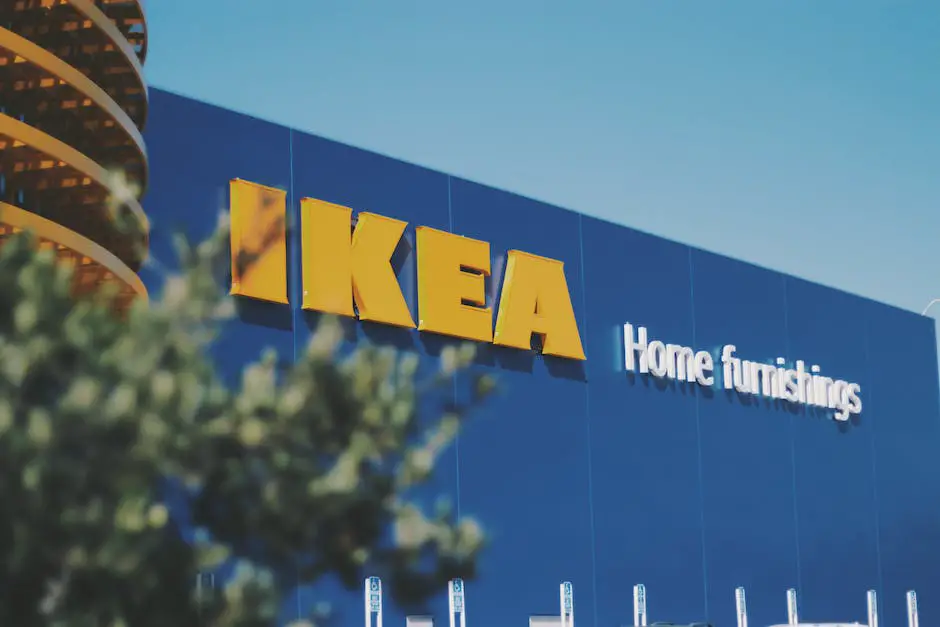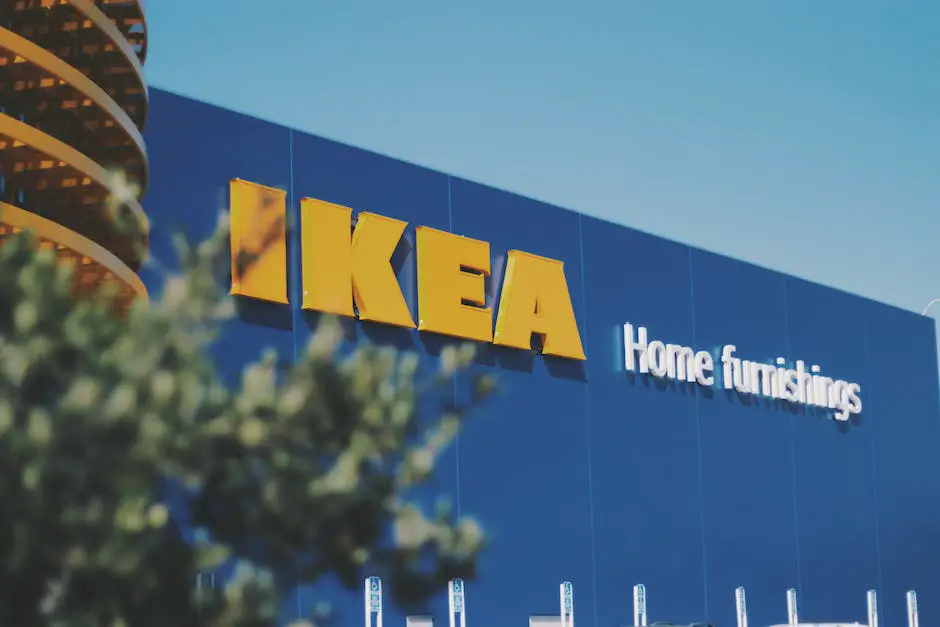Renowned for its affordable and sleek furniture designs, IKEA has been carving out a significant niche in the global market for years. Nevertheless, in recent years, the brand’s approach towards sustainability has taken center stage, gaining as much attention as their innovative designs. This shift towards sustainable living and business practices is worth a deliberation, as IKEA steps forth as a leader in this arena. This piece will explore IKEA’s approach to sustainability, their eco-friendly product offerings, their sustainable store initiatives, and their role in driving social responsibility.
IKEA’s Approach to Sustainability
IKEA’s Sustainability Mission Statement
IKEA’s sustainability vision is deeply ingrained in their mission to “create a better everyday life for the many people.” The company has outlined a plan, known as the IKEA Sustainability Strategy – People and Planet Positive, which aims to inspire and enable millions of customers to live a more sustainable life at home, utilizing resources efficiently and reducing their negative impact on the environment.
Long-Term Objectives for Sustainability
IKEA has set definitive goals to be achieved by 2030. Their ambitions cover the three change drivers within IKEA – being climate positive, removing waste, and creating a fair and equal society. IKEA aims to be climate positive by reducing more greenhouse gas emissions than the IKEA value chain emits, while also growing the IKEA business. They are striving to become a circular business, aiming to use only renewable or recycled materials. They are also committed to being fair and inclusive, wanting to create a positive social impact for everyone across their value chain.
Sustainability in Operations
Incorporating sustainability into their operations, IKEA has launched numerous initiatives. One foremost example is the move to only use renewable or recycled materials for their products. Currently, more than 60% of their product range is based on renewable materials, while almost 10% contain recycled materials. IKEA has also started integrating circularity into their business; in several markets, customers can return their old furniture, which will then be resold, recycled, or donated.
IKEA has actively shifted towards renewable energy, investing in wind and solar power for their operations. They have also implemented a zero waste to landfill approach across their operations, diverting 90% of their waste from landfill.
Empowering Consumers
IKEA is not only focusing on their operations, but is also committed to helping customers lead more sustainable lives. They have developed products and solutions that help people save energy, reduce and sort waste, use less water and eat more healthily. From energy-saving LED lights, recycling waste sorter bins, to eco-friendly kitchen appliances, IKEA’s sustainability-focused product lines aim at impacting millions of people in daily life.
Cooperating with Stakeholders
IKEA believes in joining efforts with partners, NGOs, suppliers, employees, and customers to accelerate the transition to a circular and low-carbon economy. IKEA co-workers participate in educational programs to be able to guide customers towards more sustainable choices. The company also actively co-operates with organizations like WWF and the Ellen MacArthur Foundation to progress on their sustainability goals.
In Summary
Demonstrating an unwavering commitment to environmental stewardship, IKEA is boldly paving the way in sustainable living. From their ambitious and forward-thinking sustainability goals, to the full-scale green transformation of their operations, this globally recognized brand juggles with success in multiple aspects of sustainability. Their customer and stakeholder engagement strategies amplify their mission even more. IKEA’s efforts are a beacon for other businesses, showing how to seamlessly weave sustainability into the core of their corporate DNA.

IKEA’s Environmentally Friendly Products
Delving Deeper into IKEA’s Dedication to Sustainability
Stepping beyond mere commitments, IKEA has been masterfully executing sweeping changes towards sustainable practices in every aspect of their business. Implementing measures that go beyond simply addressing environmental concerns, they have factored in eco-friendly materials in their products and strategies to curtail waste in their production and supply chain processes. In this global manifesto of sustainable living, IKEA has effectively raised the standards, establishing themselves as the brand to emulate.
IKEA’s Eco-friendly Products
A large chunk of IKEA’s products are made of renewable and recycled materials. Around 60% of their products are made from sustainable or recycled materials, including cotton, wood, metal, and plastic. All their wooden products are sourced from sustainable forests, and they also aim to increase the percentage of recycled wood in their products.
Moreover, IKEA offers an extensive range of energy-saving LED lighting products. These products not only consume less energy but also have an extended lifespan. IKEA has also started selling solar panels in some markets, allowing customers to power their homes with renewable energy.
Sustainable Packaging
Packaging also steps into IKEA’s sustainability strategy, with the company transforming its packaging into a circular system where materials are constantly reused, repaired, and recycled. They actively strive to eliminate waste from their packaging processes and have set a target to make 100% of their packaging from renewable, recyclable, or recycled materials by 2025.
IKEA’s Plant-based and Sustainable Food Options
IKEA has also brought sustainability into its food operations. With a goal to be climate positive by 2030, IKEA has been introducing more plant-based food options, aiming for 20% of the meals offered in their cafes to be plant-based by 2022. They recognize that the food industry has substantial impact on the environment and contribute heavily towards global warming. Therefore, by offering plant-based options, IKEA can reduce its carbon footprint significantly. Furthermore, all the seafood offered at IKEA is certified as sustainable.
IKEA’s Efforts in Reducing Carbon Footprint
IKEA is also committed to reducing carbon emissions in all its operations. The company’s ambitious “Climate Positive” strategy aims to reduce more greenhouse gas emissions than the IKEA value chain emits by 2030. This includes not just IKEA’s direct operations, but also full supply chains, product use in customers’ homes, and product end-of-life.
Furniture Take-Back Program
IKEA’s furniture take-back service is another example of their sustainability initiatives. This program allows customers to return their old IKEA furniture in exchange for store credits. These returned items are then refurbished and sold in IKEA’s As-Is section, thus reducing waste and promoting the reuse of products.
IKEA has proven to be a pioneer in sustainable living through their steadfast commitment to environmental consciousness in every facet of their operations. Acknowledged for their strides in offering eco-friendly products, championing recycling efforts, minimizing waste, revamping their food offerings, and their steadfast dedication to achieving a climate-positive impact, IKEA underscores the significance of sustainability in the modern business landscape and lifestyle.

IKEA’s Sustainable Store Initiatives
IKEA’s Evolution into a Pioneer of Sustainability
Upholding its commitment to sustainability, IKEA has seamlessly incorporated significant environmentally-friendly changes within its brick-and-mortar stores. Previously known mainly for their customer-facing retail experience, IKEA’s stores now serve as a living testament to their unyielding dedication to fostering a healthier and more sustainable planet.
IKEA’s Extensive Recycling Programs
IKEA prominently features recycling programs within its stores. The objective of these initiatives is to significantly reduce waste while promoting recycling. The company has incorporated recycling stations in strategic store locations, where customers can recycle plastic packaging, batteries, light bulbs, and, in some cases, even old furniture. Similarly, in 2021, IKEA announced its Buy Back initiative in several countries—an initiative that encourages customers to sell back their old IKEA furniture instead of throwing them away. This ensures the products have an extended lifecycle, reducing overall waste.
Energy-Efficient Facilities Meet Green Standards
Emphasizing energy conservation, IKEA has adopted the use of renewable energy sources and energy-efficient technologies in its stores. Installation of solar panels forms a significant part of IKEA’s strategy to reduce its carbon footprint, with many of its retail outlets around the world running fully or partially on solar power. In addition, IKEA stores use LED lighting throughout, which not only offers better illumination but is also substantially more energy-efficient than traditional lighting.
The Integration of Green Spaces
Another notable aspect of IKEA’s sustainable store initiatives is the integration of green spaces, which are designed to absorb carbon dioxide, increase biodiversity, and provide a healthier, more refreshing atmosphere for shoppers. IKEA’s Greenwich store in London, for instance, comes with a roof terrace and a biodiversity garden. This “green roofing” approach supports urban wildlife, provides insulation, and reduces the rainwater runoff, setting new standards in sustainable design.
IKEA’s Food Waste Reduction
IKEA has developed specific in-store strategies to minimize food waste. A zero-food-waste-by-2025 goal is in place and is implemented in their restaurants. This initiative helps reduce food waste through careful inventory control, offering smaller portion sizes, and using food waste to create compost for the plants sold in their stores.
Sustainability Ratings for Products
IKEA has been transparent about its commitment to sustainability by providing detailed information about its products. The brand uses ‘product sustainability scorecards’ which offer a clear and detailed breakdown of the environmental impact of the products, including material sourcing, manufacturing process, and even disposal methods.
Sustainable Supply Chain
The firm has also taken steps to ensure its supply chains meet its sustainability standards. This involves demanding that suppliers adhere to strict rules regarding resource use, waste management, pollution control, and fair labor practices.
Notably, IKEA’s steadfast commitment to sustainability is reflected in every aspect of their operations. Their numerous green initiatives are a testament to their aim for a sustainable future. It sets a remarkable precedent for retailers worldwide, demonstrating how sustainability can be perfectly integrated into every part of a business.

IKEA’s Social Responsibility
The Sustainability Commitment at IKEA
Staking its claim as a sustainability trailblazer, IKEA has set its sights high with the aspiration of becoming a wholly circular and climate-positive entity by the year 2030. Such an ambitious objective entails a significant transformation in their modus operandi. To foster sustainability, IKEA is moving away from linear methods of production and instead, placing emphasis on a model that encourages reuse, refurbishing, and recycling. Their vision is to design and manufacture products and materials with end of life recycling or upcycling in mind.
Sustainable Product Design Strategy
IKEA uses a sustainable approach to product design, designing products to be more energy and resource-efficient, while reducing the impact on the environment. Their products are developed to use fewer raw materials and to encourage customers to live more sustainably at home. A report by IKEA indicates that more than 60% of its products are now based on renewable materials, with plans in place to reach 100%.
Responsible Supply Chain Management
IKEA is also extremely diligent in ensuring ethical practices within its supply chain. The brand pursues a policy that includes social, environmental, and animal welfare considerations. IKEA’s code of conduct, named IWAY (short for IKEA Way), ensures that suppliers operate responsibly towards people and the environment.
Promoting Energy Efficiency
IKEA is leading in the area of clean energy, making significant investments in renewable energy such as wind and solar power. They have committed to becoming energy independent by 2020, which entails producing as much renewable energy as they consume in their operations.
IKEA’s Circular Business Model
The introduction of a “Buy Back” scheme is indicative of IKEA’s commitment to forming a circular business model. This program encourages customers to sell their old IKEA furniture back to the stores, which then resells the items. This initiative not only reduces waste but also extends the life of furnishings and supports a circular economy.
Empowering Workers and Communities
IKEA takes social responsibility seriously by ensuring fair wages and good working conditions. The IKEA Foundation’s initiatives reach more than 178 million children and has invested more than $200 million in programs to help families out of poverty. IKEA is also increasing the employment of refugees and other marginalized groups in their operations and supply chain.
Closing the Loop on Plastic Pollution
IKEA has set a target of using only renewable or recycled materials for its plastic products by 2030. They plan to ban single-use plastic products from their home furnishing ranges and restaurants. It removes more than a billion plastic straws, bags, and other single-use products from its stores and restaurants globally to reduce plastic waste.
These initiatives show that IKEA is not only committed to reducing its environmental impact but is also invested in positively impacting society. By leading the charge to a sustainable future, the company is setting new standards for how companies can operate in harmony with the environment and society.

It is evident that IKEA’s commitment to sustainable living is comprehensive and deeply integrated throughout their operations. With offerings of environmentally friendly products and designs, sustainable store policies focused on waste reduction and energy efficiency, and a strong commitment to social responsibility, IKEA sets a phenomenal example for other corporations to follow. As such, IKEA does not only create a positive impact on the environment and society through their actions but also promotes meaningful necessary change within the industry and beyond.


